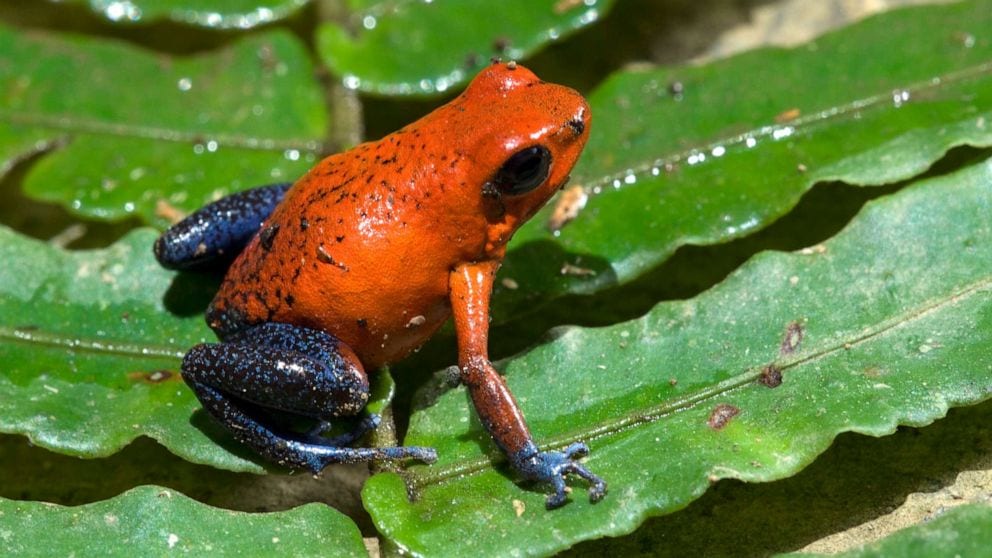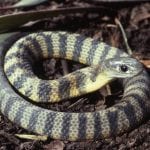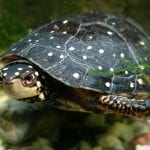Scientific Facts
| Common Name | Strawberry Poison Frog |
| Scientific Name | Oophaga pumilio/ Dendrobates pumilio |
| Origin | Northwestern Panama, and from eastern central Nicaragua. Most of the poison frogs can be seen in northern South America and in Central America. |
| Habitat | The premontane forest that has high humidity levels such as banana and cacao groves, and different plantations. They are the only frog species that spend most of their time in the floor litter, and sometimes they climb up the tree. |
| Diet | Mites, beetles, millipedes, flies, and formicine ants |
| Size and Weight | 0.6 – 0.9 in (17 – 24 mm); Less than 1 oz (5 – 14 g) |
| Life Span | Up to 17 years |
Physical Description
The strawberry poison frog or strawberry poison-dart frog is a kind of small poison dart frog that is known for its widespread differences of coloration with 15-30 color morphs, am an indication of a true-breeding. It has a physique that is slender than other frog species. It features a bilateral symmetry skin pattern. The color of this frog species are aposematism or warning coloration of its toxicity. It has all the combinations of the colors strawberry red, yellow, white, green, blue, and orange to black. It has unwebbed digits in its hand and foot.
Where it is Seen?
Its range is in northwestern Panama and from eastern central Nicaragua. Most of the poison frogs can be seen in northern South America and in Central America.
Habitat
They thrive in a premontane forest that has a high humidity level. They can also be seen in disturbed areas such as in banana and cacao groves, and different plantations. They are the only frog species that spend most of their time in the floor litter, and sometimes they climb up the tree.
Behavior and Temperament
These poison dart frogs are known for their being territorial that defends their territory from other males at around 3 meters apart. If another frog enters their territory, they are not afraid to fight. One of the striking features of this frog is that during the breeding season, it is the females who look for males and initiate mating. They have good eyesight that allows them to differentiate the different color patterns of other frogs, especially the females that rely on the color variations of the male in selecting a mate.
The strawberry poison dart frog features unique traits in their eyes that enable them to differentiate between different color variations of their species. Females rely on this ability, as they often select mates that are of the same color pattern. Like with other brightly colored poison dart frogs, this species is vital to researchers as they study how predators interpret color variations in their prey. For males, for them to have a successful mate, they must establish an area of their own territory. They use a poison that has a chemical compound, which is the alkaloid that has a natural bitter-taste that serves as their first line of defense.
Breeding and Reproduction
After the mating process, the females tend to lay at least three to five eggs in the leaves. As soon as the female lays eggs, the male ensures that the eggs are always hydrated. After 10 days, these eggs will hatch, and the females will take it into her back to place it a safe water area made by their parents, these tadpoles are fed by their mother with unfertilized eggs, these eggs are filled with nutrients and poison that the tadpoles needed. These tadpoles will then metamorphose into a froglet, but it will stay in the water for a few more days to let its tail further developed. The males and females provide full parental care to their young until they mature.
Diet
One of the causes of why their skin is toxic is due to some mites and ants that they eat. Their foraging feeding method is through sticking their tongues to catch different kinds of small prey. The alkaline toxins are found on the mites, beetles, millipedes, flies, and formicine ants. It is believed that the types and amount of insects eaten by the frog dictates the level of toxicity of the frog.
Size and Weight
These frogs are characterized by their small bodies that have an approximate 0.6 – 0.9 in (17-24 mm) in length and less than 1 oz (5 -14 g) in weight. Females tend to be larger in males, but they can hardly be differentiated with these characteristics.
Life Span
They do not have many predators because of their poison; that is why they can live up to 17 years. However, their eggs laid on the leaves are being preyed on worms, fungi, and snakes.
Poison
The Pumiliotoxin 251D is the toxin that the frog holds. It has sodium-potassium ion channels that give off a stimulating effect that is negative to the cardiac functioning of whoever eats them. The poisonous compounds are stored on their skin to be released when they are threatened. There are about 28 structural classes of different kinds of alkaloids that serve as a toxic found in the frog.
Shedding
The strawberry poison frog also shed their skin. During their juvenile years, they shed their skin almost every week. You may notice that before it shed its skin, they would spend most of their time hiding in damp surfaces, and some even have lost appetite for food. Their way of shedding is quite different because they help remove their old skin by making use of their rear legs to push it forward before eating it completely. When they reach maturity, they only shed at least four times a year.
Common Disease /Illnesses
Chytridiomycosis
This disease is caused by a fungus that affects the outermost layer of the skin that holds the keratin. There is a certain level by which the skin can only hold a certain level of these fungi. When it reaches the threshold, the skin will have difficulty in doing its responsibilities such as to hydrate, thermoregulate, and breathe. It can be seen in blood samples if there are lacking certain electrolytes such as magnesium, sodium, and potassium.
This fungal disease usually invades those amphibians that are associated with bodies of water, such as streams, ponds, and soaks. This is triggered by high temperatures that invade the surface of their skin. The skin color of this frog is active when it comes to the regulation of respiration and absorption of water and electrolytes when they are infected with this disease the normal functioning of their body is disrupted causing their death because of osmotic balance. This is one of the most devastating threats to all amphibians.
Batrachochytrium salamandrivorans
This disease is responsible for the decrease in populations of yellow-spotted climbing toad in other parts of the world where they are distributed, such as in the Netherlands and Belgium. It impacts the epidermal cells of the skin, causing skin ulcerations. Your toad will have abnormal behavior and body posture. Within 2-3 weeks of exposure to this disease, expect your toad will die if not treated properly.
Batrachochytrium dendrobatidis
This is characterized as the thickening of the part of the skin, which is the stratum corneum caused by the spore containing bodies within the keratinized cells. The normal thickness of the skin’s layers is about 2µm to 5µm, but when the yellow-spotted climbing toad is infected with this disease, the layer of the skin will reach up to 60 µm. This fungus also infects their mouthparts that makes it hard for them to eat. This is also fatal because it weakens their immune system.
Ranavirus
This is an ailment that causes the mortality of salamanders in just a short span of time. The pathogens cause severe bleeding and hemorrhages, especially of their organs. The suspected root cause of this ailment is the unsanitary transportation of these amphibians. Aside from hemorrhages, some signs that your salamander is impacted with ranavirus are redness of the skin, drowsiness, abnormal wasting, breakdown of the limbs, and eye problems.
Red Leg Syndrome (Bacterial Dermato Septicemia)
This is a bacterial disease that can be seen on the toad’s extremities. It is accompanied by medical signs such as anorexia and swelling of the legs and ankles as well as the sides of the abdomen. It is caused by an opportunistic bacterial pathogen that needs medical attention right away.
Preventing Illnesses
If your frog is infested with these diseases, some infections have no cure, yet that is especially for ranavirus, that is why sterilization and quarantine are necessary to prevent spread and to focus on management. The captive facilities and accessories should also be disinfected before returning the frog back. If the virus has no cure, the only way to get rid of it is to strengthen the immunity of the frog to heal itself.
All of these diseases are fatal if not attended to immediately. If you see signs that your frog is sick, it is advisable to take them into your veterinary for immediate action. Always instill the value of cleanliness to avoid different kinds of bacteria that may cause negatively to your pet.
Availability-Where to Get One?
Because of its beautiful appearance, the strawberry poison frog is a common pet for captivity. It is available in pet stores and in some reptile shows. There is also a wide market on the internet, but it may be pricey. It is advisable to avail one from captive-bred frogs since wild-caught strawberry poison frogs may hold different problems such as a carrier of the disease and that wild-caught strawberry poison frogs have high levels of toxicity that is why only purchase from trusted breeders.
Captive Breeding
A lot of pet lovers are fascinated with the striking colors of this frog. The way how this frog kills its potential predator is somehow problematic because it may affect biodiversity. However, these frogs are breeders who have sufficient knowledge about how these amphibians behave because they require specific requirements.
How to Care Reptile as a Pet?
Housing
Juveniles are best to be housed in a small container that has about 12″ dimensions in its height and weight. You may place at least two poison darts in one container but never place two males together, one male and one female are advisable. The reason why you need to place the frogs in the small container first to let them feel secure in their new environment first and so that the food can easily be seen.
After 6 weeks, when they are starting to increase their size, you may need to transfer them to a larger terrarium that had an environment that somehow mimics their environment. Ventilation is not a problem; the higher the humidity level is, the better you’ll just need to have a little opening for the air.
Lighting and Temperature
Even though these frogs originally from hot temperatures, they still experience cool weather at night, making them adaptable to changing weather conditions. In captivity, they should be given a moderate temperature that ranges between 70-80 degrees Fahrenheit. Make sure that the temperature does not exceed 85 degrees Fahrenheit because it is already too hot for them, and it may be fatal. Set up your tank with the right temperature for a few days before letting the frogs in.
No need to set up lighting equipment as long as the environment since it can just add up to the temperature level, as long as the environment is bright enough for them to see their food that is already sufficient. If you place them in a dark room, you can use about 20-watt fluorescent bulb (avoid using incandescent light bulbs to avoid overheating) for a 20-gallon capacity terrarium. If you intended to place real plants, lighting equipment is necessary to make it livelier. High humidity levels excite them about 80-100%; you can measure it by using thermo-hygrometers.
If your frog is hiding, that is one indication that there is something wrong with the humidity level. No need for ventilation tanks, you’ll just need to open their tank’s lid more often, anyway they will not suffocate even though there is no air especially if you have live plants, it will provide needed oxygen for the tank.
Substrate and Accessories
These frogs do well in almost all kinds of substrates, especially substrates that do good for wet conditions. Avoid using ground coconut husk because it rots quickly that may be a ground for bacteria. Decorate their terrarium with dried leaves, live, or fake plants. Long and large leaves also serve as their hiding spots aside from logs and moss. There should be a water basin where your frog can soak its body to hydrate, make sure that it is always clean.
Food
Poison dart frogs are plainly insectivores. They prey on live and small insects. The most common insects given to them in captivity are crickets and flightless fruit flies that will not add up to the poison that they carry. Whatever insect you’ll give them, make sure that it is cultured or taken from different pet shops.
Poison dart frogs are considered as voracious eaters because juveniles have the ability to eat at least 50 to 75 fruit flies in a day for about 4-5 times a week, but when they are established, if they already have fat bellies, they can eat at least once a week. They should look healthy before lessening their eating patterns. These frogs do not drink water directly from their mouth or tongue, but their body absorbs water through their skin when it contacts liquid.
Conservation Status
Their conservation status is classified as least concern where there is still a sufficient population in the wild, but their population should be controlled because severe the ones who kill animals in large numbers due to the poison that they are carrying.
The threat to their Population
Even though there are quite large numbers of possible predators that get warned through their colorations, there are still animals that are immune to their position, such as the night ground snakes. These snakes are actually the number of a threat to their population. Tadpoles are usually targeted by predators because it doesn’t contain poison yet. Another threat to their population is climate change and deforestation, but their population is still maintained at a healthy level.
FAQs
What are the common predators of strawberry poison dart frogs?
Because of their high levels of toxicity, one of their known predators that are immune to their poison is the Leimadophis Epinephelus or a night ground snake.
Where is the poison of this frog comes from?
Their poison is found on their skin; that is why in the wild, it is not advisable to touch them with bare hands. Their toxicity levels are fatal to their predators even though they’ll just glide their skin to them. Their toxic results in nausea, muscular paralysis, and serious swelling.
Is strawberry poison frog harmful to humans?
These frogs may be a carrier of parasites and bacteria that may be harmful to humans such as salmonella. That is why be cautious in handling them, as much as possible, wear protective gear.
Do Frogs poop and pee?
They have a bladder that has the ability to take hold of their urine, even in vast numbers. If their bladder can no longer contain it, that is the time they release their urine.
Do Frogs feel pain?
Just like all animals, they also feel pain, and they do not want to be taken out of their natural habitat.
How does a parent strawberry poison frog care for their offspring?
The females will usually lay on the leaves while the males ensure that the eggs moist always by urinating on them until it hatches.
How do you know if a certain frog is poisonous?
Through their coloring. Frogs with poison are those that have vibrant and colorful pigmentations and patterns. Their color ranges from blue, yellow to red.
Can poison from the strawberry poison frog kill you if you touch them?
They are toxic to touch because their poison is located on their skin. Their predators are mostly affected because their poison to them is fatal.
Does strawberry poison frog bite humans?
When they are stressed, they will emit a loud croaking sound, so it should be a signal to be cautious in handling it. They have sharp teeth that can bite when they are threatened.
How long can these frogs go without food?
In captivity, they can go for about 5 days without food as long as they look healthy with fat bellies, but if this is the case, make sure that the temperature and humidity level is a bit higher to conserve their energy.



